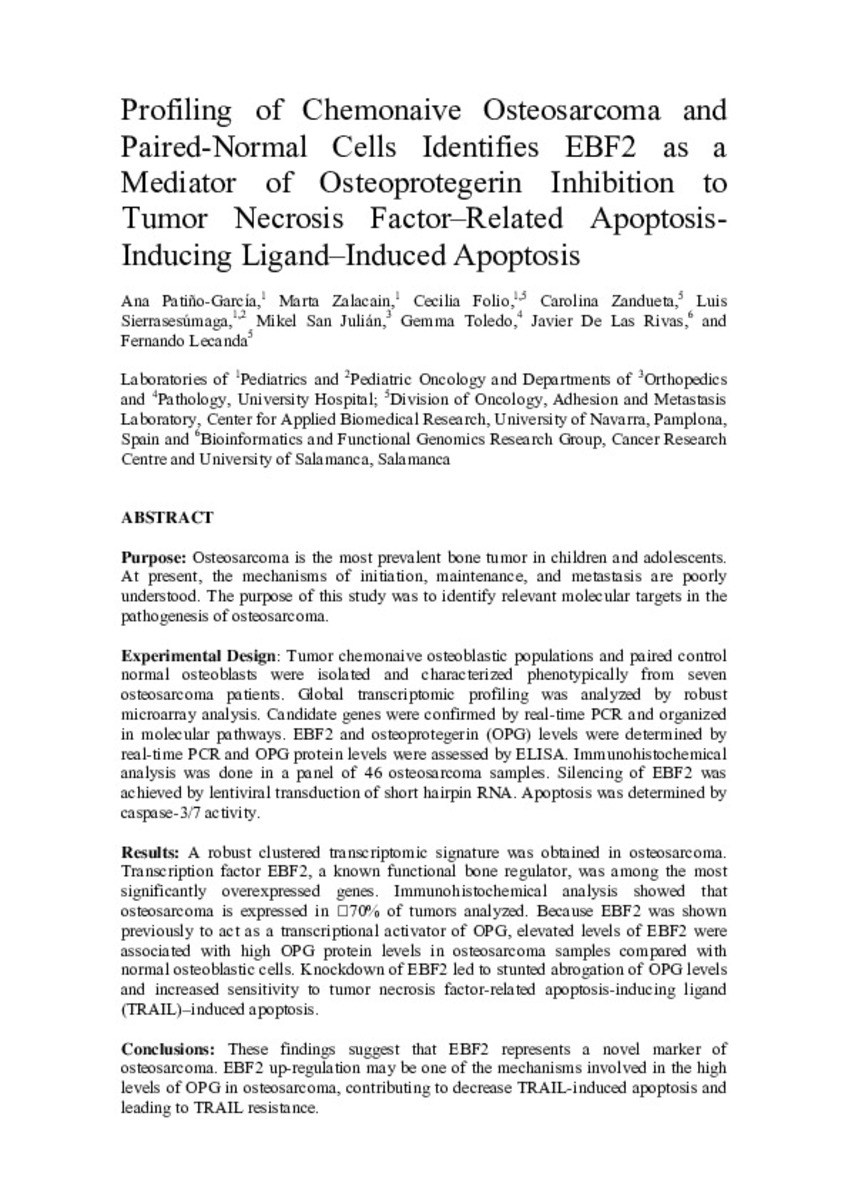Profiling of chemonaive osteosarcoma and paired-normal cells identifies EBF2 as a mediator of osteoprotegerin inhibition to tumor necrosis factor–related apoptosis-inducing ligand–induced apoptosis
Palabras clave :
Gene Expression Regulation, Neoplastic/drug effects
Osteoprotegerin/physiology
Osteosarcoma/genetics/mortality/pathology
Fecha de publicación :
2009
Editorial :
American Association for Cancer Research
Cita:
Patiño-García A, Zalacain M, Folio C, Zandueta C, Sierrasesúmaga L, San Julián M, Toledo G, De Las Rivas J, Lecanda F. Profiling of chemonaive osteosarcoma and paired-normal cells identifies EBF2 as a mediator of osteoprotegerin inhibition to tumor necrosis factor-related apoptosis-inducing ligand-induced apoptosis. Clin Cancer Res. 2009 Aug 15;15(16):5082-91.
Aparece en las colecciones:
Estadísticas e impacto
0 citas en

0 citas en

Los ítems de Dadun están protegidos por copyright, con todos los derechos reservados, a menos que se indique lo contrario.









